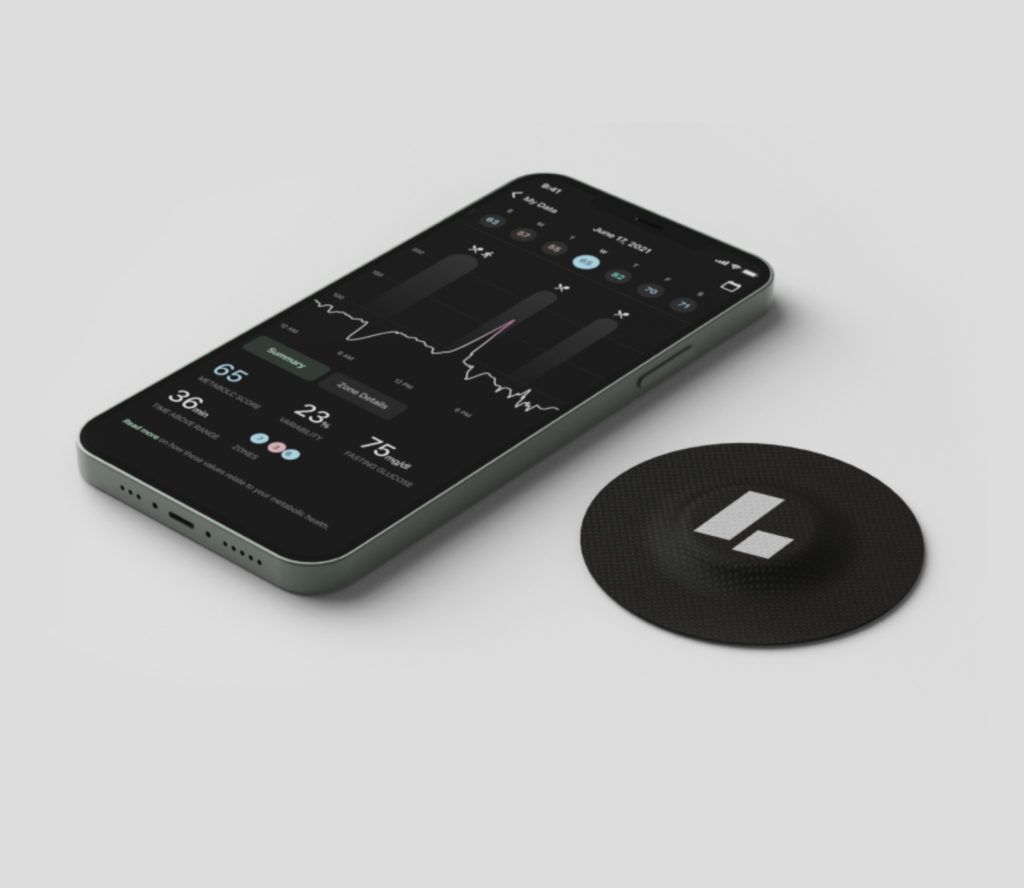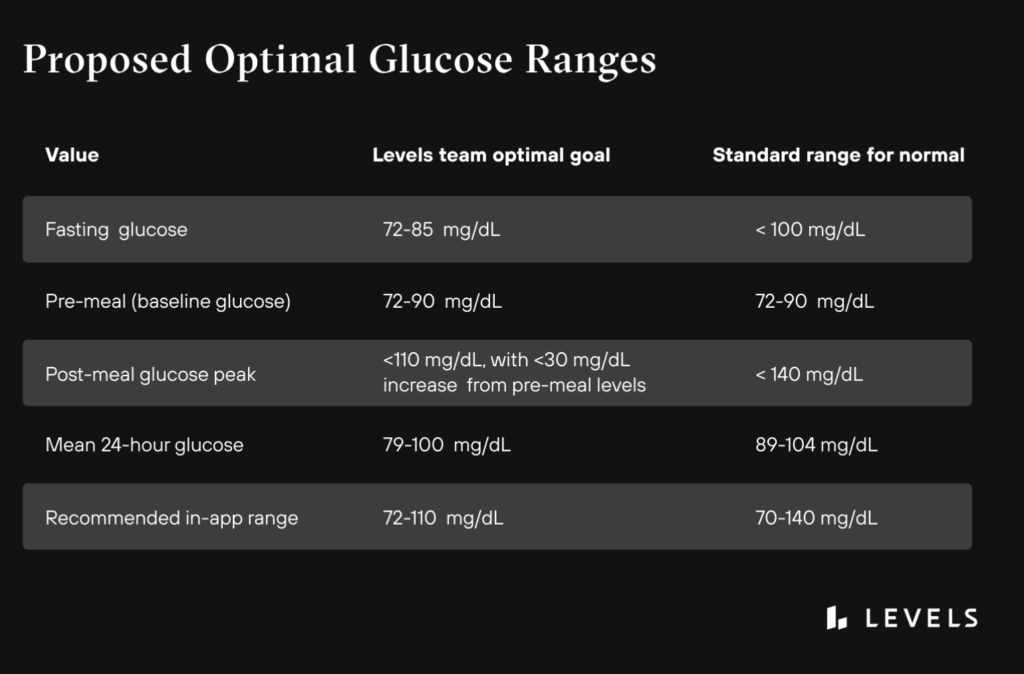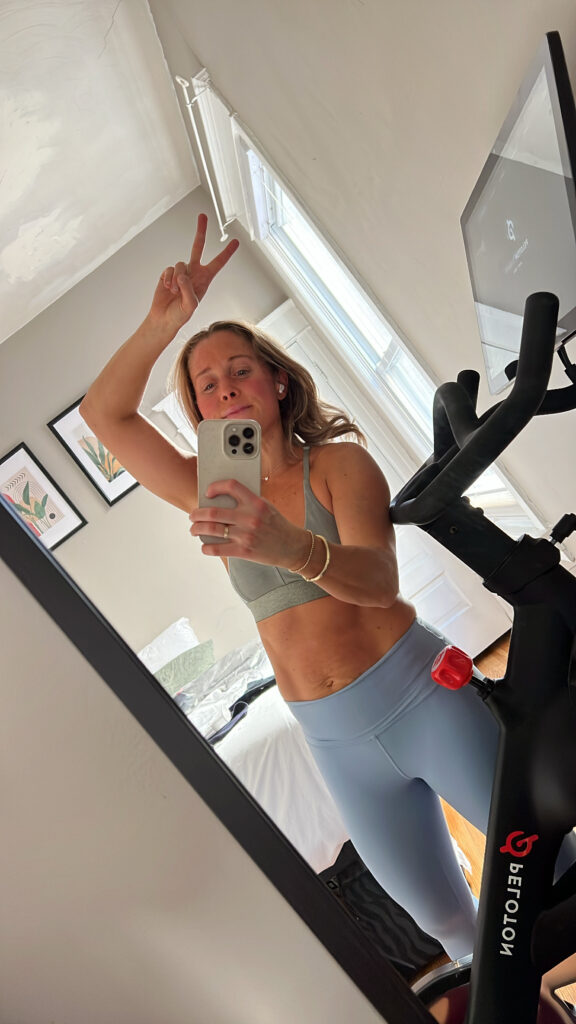Say hello to next-gen wellness tech: the continuous blood glucose monitor. If you’ve ever wondered how your body responds—in the moment—to what you eat, stress, exercise, sleep, and more, a CGM is worth the hype. Cutting right to the chase, this wearable health monitor analyzes changes in your blood glucose levels. As you live your life, your CGM is taking stats. And with that data (in the palm of your hand), you can make more informed choices about your diet and lifestyle. In turn, you can usher in the healthiest year of your life. The new frontier of wellness, we’re diving into what a CGM is, why it’s beneficial, and the best continuous blood glucose monitors on the market.

What is Blood Glucose?
Before we dive into CGMs, let’s start with the basics. What is blood glucose? Glucose, or blood sugar, is our main source of energy. It’s a type of sugar we get from the foods we eat. From cereal to carrots, our body uses that sugar for energy. As it travels through our bloodstream to our cells, it’s called blood glucose (or blood sugar). Our bodies break down—or convert—most carbohydrates into glucose. With the help of a hormone called insulin, glucose travels into the cells of the body where it can be used for energy.
Why is Blood Glucose important?
Armed with an understanding of blood glucose, you make more informed decisions about your lifestyle. It’s important to understand blood glucose because ideally, you want your blood sugar levels to stay in a healthy range. If glucose levels get too low, you can lose the ability to think and function normally. If they get too high—and stay high—elevated glucose can cause unwanted health conditions. See here for recommended blood sugar ranges.

How To naturally Manage Your Glucose Levels
When it comes to keeping your blood glucose stable, look no further than your diet and lifestyle.
Diet
Focus on building a balanced plate. That means including the three macronutrients—protein, complex carbohydrates, and healthy fats. And when possible, pack in fiber-rich ingredients—leafy greens, non-starchy carbohydrates, and seeds. Counter to diet culture, you need to eat enough. After all, eating less than your caloric needs increases the production of cortisol. Cortisol is our stress hormone. Chronically elevated cortisol causes blood sugar imbalance.
Lifestyle
Secondly, take inventory of your lifestyle. Managing your glucose means getting quality sleep, minimizing stress, and moving your body. Exercise is important for many reasons, but it’s crucial for helping control blood sugar spikes. Movement encourages insulin sensitivity (a good thing!). When you exercise, your muscles absorb sugar from what you eat, naturally lowering blood sugar levels. Good news: no need for intense exercise. In fact, moderate-intensity exercise—like walking—has been found to reduce blood sugar spikes. Strength training is ideal. But standing at your desk counts, too.

What is a Continuous Blood Glucose Monitor?
Maybe you’ve seen celeb influencers, doctors, or friends wearing a censor on the back of their arm called a Continuous Glucose Monitor (CGM). It’s a wearable tech device that gives you direct insight into your health. It shows you how your food and lifestyle choices influence your blood sugar. Wearing one is truly a game-changer. Over time, it tracks your glucose patterns and responses to certain foods and habits. In turn, this data can help you reverse pre-diabetes and type 2 diabetes, improve pregnancy outcomes for gestational diabetes, empower your dietary choices, and so much more.
How is a CGM Device Inserted?
It’s inserted under the skin on your arm via a small needle. It measures your blood glucose levels from your tissue fluid between the cells. This information is tracked every few minutes and updated to the app. Does it hurt? Nope! There may be mild discomfort when first inserting the sensor, but there is no pain afterward.
Who are CGMs for?
They were originally designed for those with diabetes, but everyone benefits from monitoring their blood sugar. CGMs can help with symptoms like fatigue, weight gain, imbalanced mood, metabolic / hormone issues—like PCOS—and more. They can also serve as a tool to help prevent heart disease. Think of a CGM as the tech that allows you to lift up the hood of your car. By wearing one, you can see how your food and lifestyle habits impact how well your car (body) runs. With this knowledge, anyone can benefit from a CGM. They’re the ticket to personalized nutrition, exercise, sleep habits, and more.

the Best Continuous Glucose Monitors
So, what are the best continuous glucose monitors? I alternate between Levels and Nutrisense. In my experience, these two are the best CGMs on the market.
Levels Health
SKIP THE WAITLIST, TODAY! There are over 150,000 people on the waitlist for Levels. Use this link to get yours. And, you get two months of a free membership! This is my top recommended continuous blood glucose monitor. They’ve partnered with FreeStyle Libre, the sensor that lives on your arm. In essence, FreeStyle Libre provides the sensor and Levels provides all the software data from the sensor. I absolutely love mine.
Nutrisense
If I’m not using Levels, I’m using Nutrisense! Nutrisense is another app that gives you direct insight into your blood sugar levels. It’s the same sensor as Levels, just a different app you can choose from. It’s helped me improve my sleep, support my metabolism, guide my dietary choices, and put my PCOS into remission. I simply insert the CGM device into my arm (it doesn’t hurt!) and it measures my blood glucose levels—in real time. This information is tracked every few minutes and updated in the Nutrisense app.
Want $25 off your first month with Nutrisense? Use code EDIE25 at checkout!
Are blood glucose monitors accurate?
According to the FDA, accurate glucose meters provide results that are within ±15% of the lab 95% of the time. For example, if your lab test results show a blood glucose value of 170, your glucose meter reading must fall between 145 and 195. This is important to keep in mind when you’re using a blood glucose device. CGMs are not perfectly accurate devices either (although they are typically more accurate than standard finger pricking devices).
If you don’t want to wear a CGM, check out my Blood Sugar Reset Meal Plan. It’s an intro to managing blood sugar, complete with a a 7-day meal plan to help balance your blood sugar.




Leave a Reply